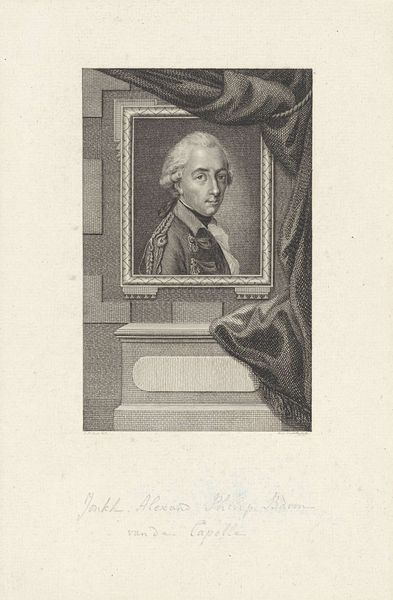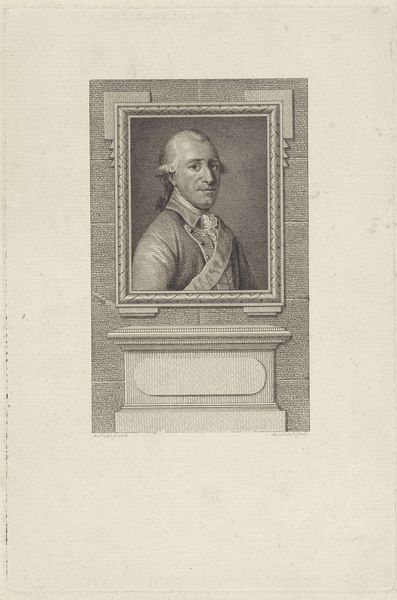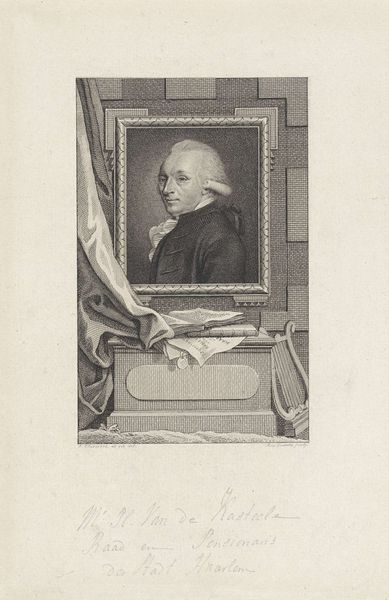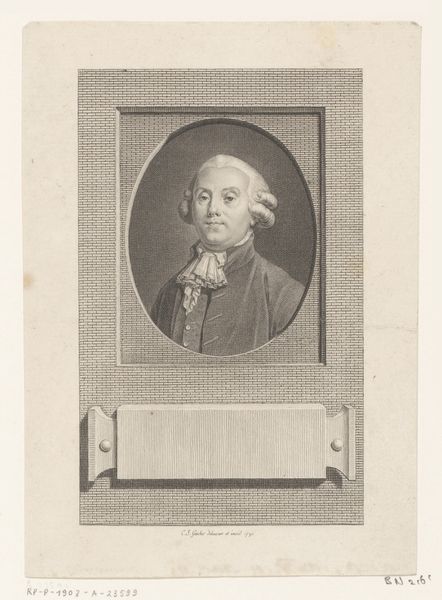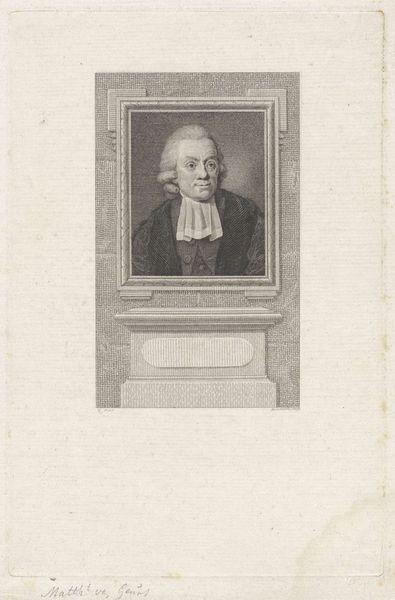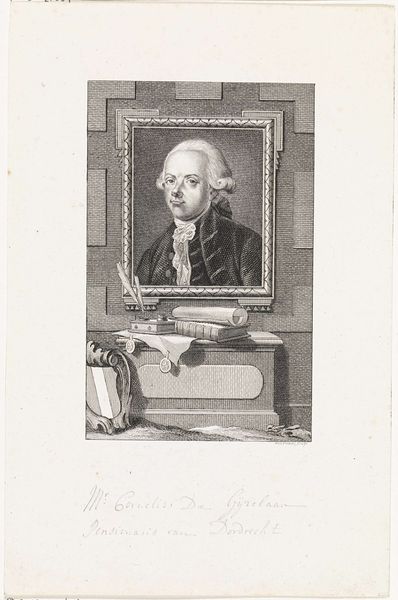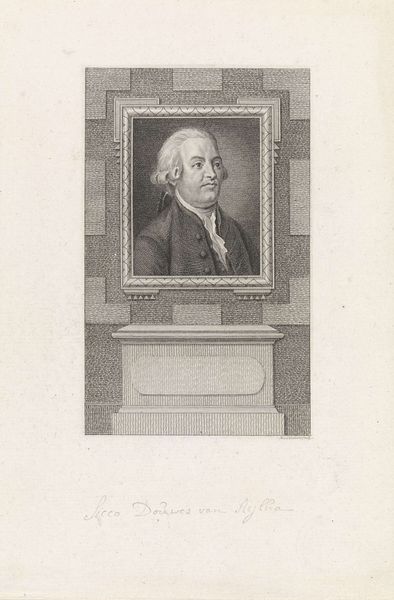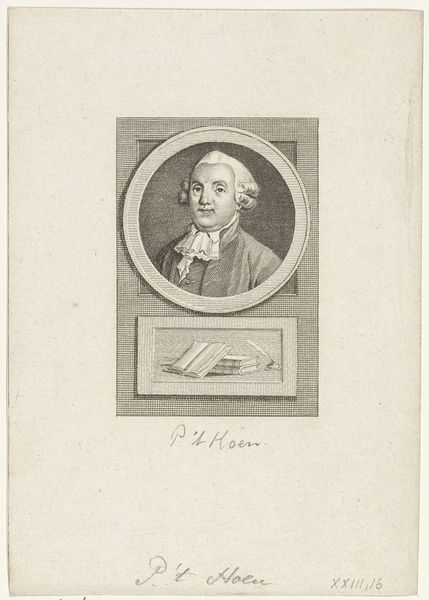
#
pencil drawn
#
aged paper
#
light pencil work
#
pencil sketch
#
old engraving style
#
personal sketchbook
#
pencil drawing
#
sketchbook drawing
#
pencil work
#
sketchbook art
Dimensions: height 233 mm, width 156 mm
Copyright: Rijks Museum: Open Domain
Editor: This is "Portret van Jasper Hendrik van Zuylen van Nyevelt," created sometime between 1786 and 1809 by Reinier Vinkeles. It looks like a pencil drawing on aged paper. I'm curious about the process... What stands out to you? Curator: The use of pencil is key here. It democratizes portraiture. Oil paint was expensive, a symbol of status. A pencil sketch suggests a different kind of access – perhaps a study, or a more intimate depiction outside formal conventions. How does that immediacy change our reading of the sitter's wealth and social standing? Editor: That's a good point. I hadn't considered the economic implications of the materials. So, instead of purely admiring the subject, we're now thinking about the social statement made through artistic means? Curator: Precisely. Consider also the engraver's craft, translating an image into a reproducible form. This raises interesting questions about authorship and the consumption of images. Was Vinkeles attempting to popularize the sitters' image by using this printing process? Was he democratizing the image? Who had access to such portraits and in what quantity? Editor: So, it's not just *who* is being depicted but *how* and for *whom*. The material—the pencil, the paper—reveals the dynamics of production and consumption during that period. Curator: Exactly. And the sketch-like quality challenges the formal tradition of portraiture. The lines are light, almost hesitant. It invites us to consider the labor involved, the artist’s hand, and challenges our perception of art’s cultural value as labor instead of genius. What can this tell us? Editor: This conversation really transformed my perspective. I now appreciate that every artistic decision reflects a material reality tied to the artist, the sitter, and broader economic forces. Curator: Indeed, it reveals how deeply entangled art is with the fabric of society and social status during its making.
Comments
No comments
Be the first to comment and join the conversation on the ultimate creative platform.
